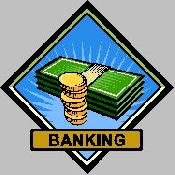
 |
|
| Financial Terms | |
| Calendar |
|
Information about financial, finance, business, accounting, payroll, inventory, investment, money, inventory control, stock trading, financial advisor, tax advisor, credit.
Main Page: inventory, business, money, financial, credit, payroll, tax advisor, accounting, |
Definition of Calendar
CalendarList of new issues scheduled to come to market shortly.
Related Terms:Calendar effectThe tendency of stocks to perform differently at different times, including such anomalies as Balance of paymentsA statistical compilation formulated by a sovereign nation of all economic transactions Fiscal yearA 12 month period over which a company reports on the activities that W-2 FormA form used to report gross pay and tax deductions for each employee Antidilutive effectResult of a transaction that increases earnings per common share (e.g. by decreasing the Balance of tradeNet flow of goods (exports minus imports) between countries. Balance sheetAlso called the statement of financial condition, it is a summary of the assets, liabilities, and  Balance sheet exposureSee:accounting exposure. Balance sheet identityTotal Assets = Total Liabilities + Total Stockholders' Equity Balanced fundAn investment company that invests in stocks and bonds. The same as a balanced mutual fund. Balanced mutual fundThis is a fund that buys common stock, preferred stock and bonds. The same as a Basic balanceIn a balance of payments, the basic balance is the net balance of the combination of the current Clearing House Automated Payments System (CHAPS)A computerized clearing system for sterling funds Clearing House Interbank Payments System (CHIPS)An international wire transfer system for high-value Clientele effectThe grouping of investors who have a preference that the firm follow a particular financing Coinsurance effectRefers to the fact that the merger of two firms decreases the probability of default on  Compensating balanceAn excess balance that is left in a bank to provide indirect compensation for loans Coupon paymentsA bond's interest payments. Dilutive effectResult of a transaction that decreases earnings per common share. Double-declining-balance depreciationMethod of accelerated depreciation. Effective annual interest rateAn annual measure of the time value of money that fully reflects the effects of Effective annual yieldAnnualized interest rate on a security computed using compound interest techniques. Effective call priceThe strike price in an optional redemption provision plus the accrued interest to the Effective convexityThe convexity of a bond calculated with cash flows that change with yields. Effective dateIn an interest rate swap, the date the swap begins accruing interest. Effective durationThe duration calculated using the approximate duration formula for a bond with an Effective margin (EM)Used with SAT performance measures, the amount equaling the net earned spread, or  Effective rateA measure of the time value of money that fully reflects the effects of compounding. Effective spreadThe gross underwriting spread adjusted for the impact of the announcement of the common Fisher effectA theory that nominal interest rates in two or more countries should be equal to the required real Information-content effectThe rise in the stock price following the dividend signal. Interest paymentsContractual debt payments based on the coupon rate of interest and the principal amount. International Fisher effectStates that the interest rate differential between two countries should be an Lag response of prepaymentsThere is typically a lag of about three months between the time the weighted Low price-earnings ratio effectThe tendency of portfolios of stocks with a low price-earnings ratio to Neglected firm effectThe tendency of firms that are neglected by security analysts to outperform firms that Net cash balanceBeginning cash balance plus cash receipts minus cash disbursements. Off-balance-sheet financingFinancing that is not shown as a liability in a company's balance sheet. P/E effectThat portfolios with low P/E stocks have exhibited higher average risk-adjusted returns than high P/E stocks. Payments nettingReducing fund transfers between affiliates to only a netted amount. Netting can be done on Payments patternescribes the lagged collection pattern of receivables, for instance the probability that a Prepaymentspayments made in excess of scheduled mortgage principal repayments. Receivables balance fractionsThe percentage of a month's sales that remain uncollected (and part of Remaining principal balanceThe amount of principal dollars remaining to be paid under the mortgage as of Small-firm effectThe tendency of small firms (in terms of total market capitalization) to outperform the Synergistic effectA violation of value-additivity whereby the value of the combination is greater than the Target cash balanceOptimal amount of cash for a firm to hold, considering the trade-off between the Weekend effectThe common recurrent low or negative average return from Friday to Monday in the stock market. Zero-balance account (ZBA)A checking account in which zero balance is maintained by transfers of funds BALANCE SHEETA “snapshot” statement that freezes a company on a particular day, like the last day of the year, and shows the balances in its asset, liability, and stockholders’ equity accounts. It’s governed by the formula: Declining balanceAn accelerated depreciation method that calculates depreciation each year by applying a fixed rate to the asset’s book (cost–accumulated depreciation) value. Depreciation stops when the asset’s book value reaches its salvage value. Balanced ScorecardA system of non-financial performance measurement that links innovation, customer and process measures to financial performance. Balance SheetA financial statement showing the financial position of a business – its assets, liabilities and Balance SheetOne of the basic financial statements; it lists the assets, liabilities, and equity accounts of the company. The balance Sheet is prepared using the balances at the end of a specific day. Declining-balanceA method of depreciation. Trial balanceA listing of all the accounts and their balances on a specified day. balance sheetA term often used instead of the more formal and correct Effective Annual YieldAnnualized rate of return on a security computed using compound Effective Interest RateThe rate of interest actually earned on an investment. It is balanced scorecard (BSC)an approach to performance effectivenessa measure of how well an organization’s goals Balance sheetA report that summarizes all assets, liabilities, and equity for a company balance sheetFinancial statement that shows the value of the common-size balance sheetbalance sheet that presents items as a percentage of total assets. effective annual interest rateInterest rate that is annualized using compound interest. international Fisher effectTheory that real interest rates in all countries should be equal, with differences in nominal rates reflecting differences in expected inflation. market-value balance sheetFinancial statement that uses the market value of all assets and liabilities. zero-balance accountRegional bank account to which just enough funds are transferred daily to pay each day’s bills. Balance of Merchandise TradeThe difference between exports and imports of goods. Balance of Payments AccountsA statement of a country's transactions with other countries. Balance of TradeSee balance of merchandise trade. Balanced-Budget MultiplierThe multiplier associated with a change in government spending financed by an equal change in taxes. Effective Exchange RateThe weighted average of several exchange rates, where the weights are determined by the extent of our trade done with each country. Policy-Ineffectiveness PropositionTheory that anticipated policy has no effect on output. Wealth EffectThe effect on spending of a change in wealth caused by a change in the overall price level. Blue Ribbon Committee on Improving the Effectiveness of Corporate Audit CommitteesA committee formed in response to SEC chairman Arthur Levitt's initiative to improve the financial Cumulative-Effect AdjustmentThe cumulative, after-tax, prior-year effect of a change in accounting Cumulative Effect of Accounting ChangeThe change in earnings of previous years assuming Cumulative Effect of a Change in Accounting PrincipleThe change in earnings of previous years Effective Tax RateThe total tax provision divided by pretax book income from continuing Panel on Audit EffectivenessA special committee of the Public Oversight Board that was created On-hand balanceThe quantity of inventory currently in stock, based on inventory Projected available balanceThe future planned balance of an inventory item, Balance SheetA financial report showing the status of a company's assets, liabilities, and owners' equity on a given date. Progress PaymentsPeriodic payments to a supplier, contractor or subcontractor for work satisfactorily performed to date. Related to : financial, finance, business, accounting, payroll, inventory, investment, money, inventory control, stock trading, financial advisor, tax advisor, credit. |